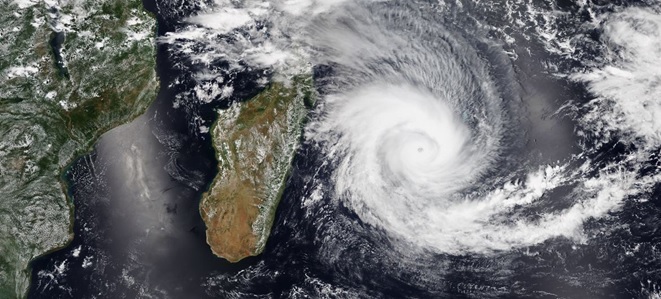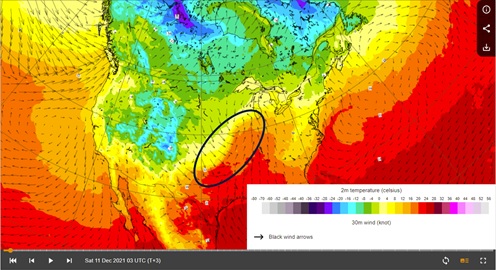POLICY BRIEF: Opportunities & Risks of AI-applications in Climate Sciences

Artificial Intelligence (AI) is unlocking new frontiers in climate science and climate services—from improving impact-based seasonal forecasts to longer-horizon climate risk projections. However, the rapid growth of AI also brings challenges related to reliability, interpretability and trustworthiness. To fully harness AI’s potential while maintaining public trust, we need to invest in data-driven and hybrid models, transparent and open data practices, and robust validation. Funders, academics, and climate-tech startups must work together to develop scientifically credible AI-based climate services – at a time when informed responses to climate risks are more critical than ever.
POLICY BRIEF: RISKS FROM CLIMATE EXTREMES OVER EUROPE AND BEYOND

Extreme weather events in 2023 illustrated how poorly prepared the world is for the growing risks of climate change. Nowadays it is possible to use attribution science to investigate the role of climate change and other factors in specific weather and climate extremes. Attribution studies estimate by how much a specific extreme event was made more (or less) likely and/or intense because of climate change. This policy brief summarizes key learnings from the first two years of the XAIDA project and formulates recommendations.
DESPITE GLOBAL WARMING, COLD SPELLS SUCH AS WITNESSED IN THE 1980’s IN WESTERN EUROPE ARE STILL POSSIBLE

Extreme cold spells are still possible today in Western Europe, even with current warming trends.
The atmospheric circulation patterns that drive extreme low temperatures, e.g. as in January 1985, remain possible in current winters.
Under such conditions we anticipate that with current regional warming trends, temperatures would only be about 1.4°C warmer than in 1985, with potential impacts on the electricity grid, and health.
As an example, a circulation-induced 1985-like cold spell in today’s climate would likely stand at around -9°C over France for minimum temperatures, which would still be amongst the 5-10 coldest cold spells observed in the past five decades.
The « Medicanes » (Mediterranean Hurricanes) and climate change

Medicanes are Mediterranean cyclones whose characteristics resemble those of tropical cyclones. They are often associated with hurricane-force winds and heavy precipitation. With a frequency of 1-2 per year, it is a challenge to determine whether their frequency should increase or decrease in a warmer world. Their intensity is however projected to increase due to the warming projections for the Mediterranean sea, the main source of energy for medicanes.
EARLY 2022 HEAT WAVES IN EUROPE AND CLIMATE CHANGE

The summer of 2022 was pounded by a series of heat waves in Europe. The first, an outstanding early heat wave, took place in mid-June 2022 across Europe, mostly hitting Spain, France, but also other parts of Europe. The early character of the heat, in a crucial season for agriculture and ecosystems, is likely to have induced specific impacts on health and agriculture, which will need to be assessed. During the XAIDA Summer School in Trieste, students have studied the relation of this heatwave to climate change.
WINTER DROUGHT IN THE MEDITERRANEAN: WHAT DO WE KNOW?

Since October 2021 and until mid march 2022, a severe drought has gripped the Western Mediterranean area, putting harvests from rain-fed crops potentially at risk. Winter is a crucial season for water resources in this region. What is the current state of our knowledge?
CYCLONES AND CLIMATE CHANGE: WHAT DO WE KNOW? THE CASE OF CYCLONE BATSIRAI

Tropical Cyclone Batsirai has left Madagascar after killing dozens, displacing tens of thousands and devastating the island’s agriculture, already suffering from drought hard hitting a vulnerable population, Unicef said, adding that many of the victims are probably children, who make up more than 50% of Madagascar’s population. Batsirai hit eastern Madagascar with a Category 3 strength on the evening of Saturday 5 february 2022, bringing heavy rains and winds of 165 km/h. The city of Mananjary in the east of the country “has been completely destroyed”, one of its residents said.
TORNADOES AND CLIMATE CHANGE: WHAT WE KNOW

Devastating tornadoes in central U.S.A. took place on 10 and 11 December 2021, with widespread destruction of homes, infrastructures, and large parts of some midwest cities. Over a hundred people lost their lives and many more were injured. Given that we already live in a world of 1.2°C global warming, such extreme events immediately raise the question whether and to what extent climate change altered the likelihood and intensity of these devastating storms. Here we briefly summarize the current scientific knowledge on such links.

